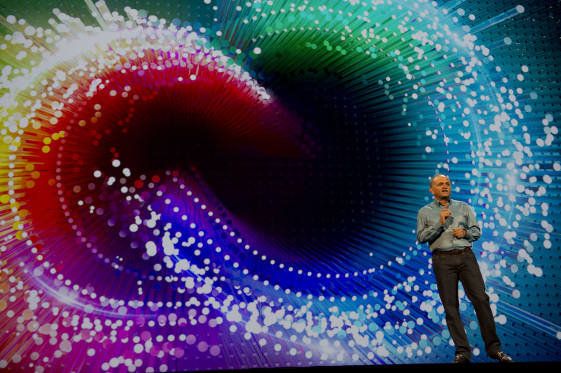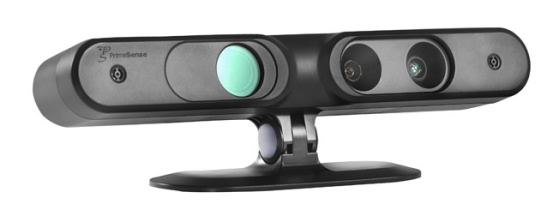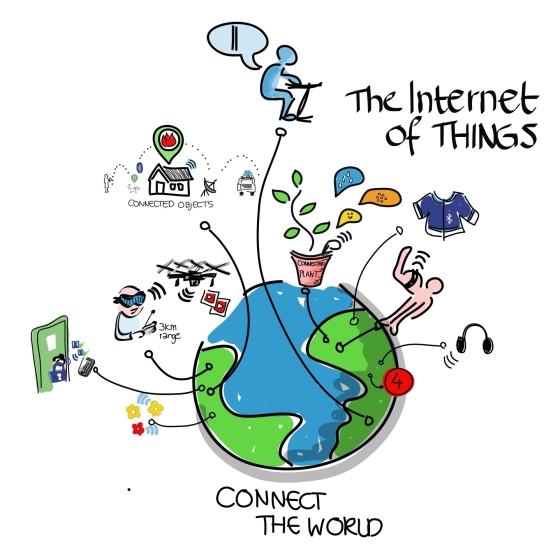Product introductions from 2013–2014 will make for an eventful 2015
By Kathleen Maher
This year saw a return of optimism even as the problems of the environment seem impossibly bleak. Our faith in technology has redoubled and people are starting to talk crazy: we’re going to live under the sea, we’re going to move to Mars, we’ll build bionic human parts, we’ll party on the holodeck.
Gotta love crazy talk, that’s how real stuff happens. We can hope that technology saves our bacon when it comes to health care, but it’s hard to imagine we can move fast enough to avoid some environmental Armageddon— they’re becoming yearly events. So, we’ll just stay home, play with our toys, and hope the house doesn’t slide out from under us.
Software for rent is coming
Oh wait, software for rent is already here, isn’t it? Adobe and Salesforce are proving the model works. People can mutter about how they’ll die before they rent software, but then they’ll rent and there won’t be a bunch of dead bodies lying around—the physical remains of people who have dropped dead after somehow accidentally renting software. Instead, when people must have a particular piece of software, they will rent it. When they’re done with it, they’ll stop paying. However, there is a mighty big catch: people will have a limit on the amount they will pay per month, because all that stuff adds up. Businesses have a higher tolerance for monthly dues because it’s all part of doing business and doing business gets a tax refund, but individuals are going to get tired of a monthly pinch, which leads to the continued rise of apps.

Apps rule
People have mindlessly talked about the 80/20 rule of software for about a hundred years, and now the rule has come home to roost. Apps actually give us the 20% we want for 20% or even less of the money we’re shelling out for great big, multi-purpose applications. The rules are getting tougher for software: give me exactly what I want and I’ll give you a little bit of money. Give me what I absolutely have to have to do my job (or be entertained) and I will pay the toll monthly.
As I was writing this one, I was about to talk about how subscriptions for cable are doomed, but then I realized subscriptions for Netflix are on the rise. So, there’s no easy analogy there—other than, it’s the content that counts. We’ll buy a great series that’s a year or two old on DVD and watch it through, but we’re all getting a little tired of paying $50 to $100 a month for the same-old-TV-shows, and besides, we’re already going broke paying the monthly dues on our phones so we can get those apps that free us from big, expensive software applications.
Tablets win … at least in some places
As this is being written sales of ARM-based tablets are dropping off as they reach saturation and people have to make decisions about what kind of new device they want. Tablets can be PCs with x86 processors or they can be mobile devices with ARM processors, and maybe Intel will manage to blur those lines, but it seems likely that people will have touchscreen devices that have a keyboard or not, and they’ll be mobile.
It’s the mobility that wins the game because people are able to take their data to where their work is. They can verify what’s on the ground, or capture it, or create new data in context. We see the CAD industry and entertainment content creation being changed forever by the arrival of tablets—it’s as if the world has done a 180 and has taken us back to the invention of CAD when people were drawing on screens with digitizers and then drawing on digitizers. The whole point has always been to draw, and tablets give us back that critical human skill to use on the computer. However, because the tablet culture encourages the creation of cheap, powerful apps to handle tasks, we see the emergence of a fabulous new mode of content creation that combines drawing and real-world 3D content easily captured, transformed into voxels, and massaged into new content.
We’re really looking forward to what happens when 3D cameras as pioneered by Microsoft’s Kinect and Prime Sense technology come to tablets and start interacting with the world.

Augmented Reality is the next 3D
Everything I said about tablets leads inevitably to the increasing use of augmented reality (AR). The technology gained a strong foothold in 2014 with new applications in everything from motorcycle helmets to tablet-based shopping tools (how does that couch look in my living room?). As the enabling technology for 3D capture begins to be built into everything that has a camera sensor now (phones, cars, tablets, PCs, spies, helmets, and, of course, cameras), AR will arrive to enrich the data being captured.
3D stays in the theater
It was going to be different this time, but as it turns out, the rise of stereoscopic 3D wasn’t just another hot air balloon: up it goes, but sooner or later it’s going to come down again. In general, movies are not being shot in 3D; the technology to create 3D in post has gotten good enough to satisfy the children and Transformer fans who make up the majority of the audience for 3D films. To be fair, I’m looking forward to seeing Into the Woods on Christmas Day in 3D; and I’ll have a great time, but 3D does not draw me into the theater, and I’m pretty sure it doesn’t draw you in either. Fans in Asia are helping keep 3D alive, and the arrival of at least one decent 3D movie a year helps keep the art alive. This 3D balloon went up higher and stayed longer and produced some great movies, but people really don’t want to wear glasses outside the theater. The majority of people go to theaters to see big spectacles. So far in 2014, the top 10 movies at the box office are big spectacles with number 1 being Guardians of the Galaxy, followed by part 1 of The Hunger Games. Only number 11, 22 Jump Street, is more a more a live action movie than a special effects extravaganza (and all that is really arguable, given truck chases, helicopters, and an octopus). Gone Girl is number 16.
At home we may watch the occasional big blow-up movie because, well, there are men in the house and sometimes they have to win, but home is generally where we watch smaller movies, plot-driven movies, cop shows, mysteries, and high-quality series. You just don’t need glasses for that kind of content.
Oculus won’t save stereoscopic 3D, but a bunch of money will be made and lost as history repeats itself
Oculus has helped drive huge interest in stereoscopic 3D VR content. I can only watch helplessly. VR is fun, but it’s honestly not fun to wear the headset. Where are all those idiots who have senselessly repeated “People don’t want to wear those stupid glasses”? They are running into walls wearing VR rigs. True gamers won’t wear glasses, because gaming is about winning, not looking around at stuff. So far, the attempt to create true VR content has not been promising. You can tell a story in VR, but no one has yet made it interesting.
Someday soon the glasses will get smaller and more comfortable, the content will get better, and maybe some genius will create a VR app that average people will be willing to use for more than 20 seconds. Then I’ll be wrong, but until then, VR will remain a parlor trick and trade show bait.
The Internet of Things thing dies as a fad and lives as a reality
Someone faster on the draw than me has pointed out that the Internet of Things has been around a long time; it’s called embedded systems. That person was right, but it’s the connections that make the difference. The fact that my Fitbit talks to my iPad and then taunts my friends online makes it that much more fun than the pedometer that’s sitting in the top drawer of the bedroom bureau, but the revolution is just getting started. Google Wallet and Apple Pay are enabling us to leave heavy wallets. One look at the Uber app, with all those black cars cruising around, promises a very near future that looks a little like Watchdogs and Person of Interest, a good and bad thing. Or, to use a more pleasant example, as everything gets an ID tag, goods can be more efficiently tracked around the world, and price increases driven by “leakage” will decline. If vendors can track their goods, they may be able to track where theft, accidental damage, or mismanagement is siphoning off goods.

But what technology gives, it takes away. Pretty soon we’re all going to be waving our phones at counter clerks to pay for stuff. It’s convenient and fun. Researchers are seeing a significant jump in digital payments. Apple Pay is proving popular and has even boosted Google Wallet. However, vendors are glum about this prospect because Google and Apple are not beneficent providers. They’re taking their bit off the top from vendors. They’re taking a bit out of the pie credit card companies thought was theirs. Someone is going to have to pay for this, and we’re pretty sure it’s not going to continue to be the vendors, right? The first vendors accepting Apple Pay are large chains including Walgreens, Whole Foods, and McDonald’s, not little companies with skinny margins. We think there’s a new techno-war brewing on that front, and we’ll be the center of it, but we probably won’t notice much.





